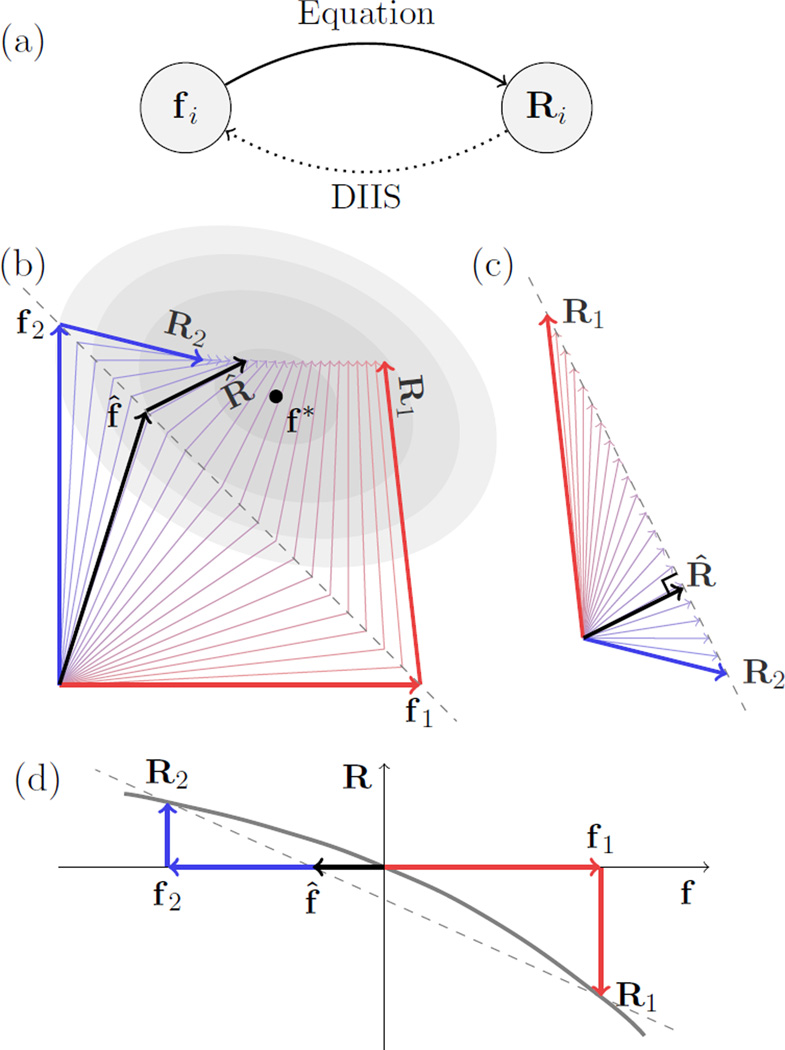Figure 1.
Schematic illustrations of the method of direct inversion of the iterative subspace (DIIS). (a) As an iterative method, DIIS solves the equation, R(f) = 0, by a feedback loop. When the equation is applied to a trial solution, represented by vector fi, we get a residual vector Ri ≡ R(fi), whose magnitude indicates the error. Ideally, if fi were the true solution, Ri would be zero. In the feedback step, we correct fi using Ri. The task of DIIS is to construct from a few previous vectors accumulated during the iteration an optimal trial vector f̂ with hopefully the smallest error ‖R̂‖ to help the next round of iteration. (b) and (c) Given a basis of M (two here) trial vectors, DIIS seeks the combination that minimises the magnitude ‖R̂‖ under the constraint [panel (c)]. The corresponding combination of the trial vectors, , is expected to be close to true solution, f*. Then, we construct the new trial vector as f(n) = f̂ + R̂ and use it to update the basis for the next round of iteration. (d) If the vectors are one-dimensional (i.e., scalars), it is possible to find a vanishing R̂, and DIIS is equivalent to the secant method.

